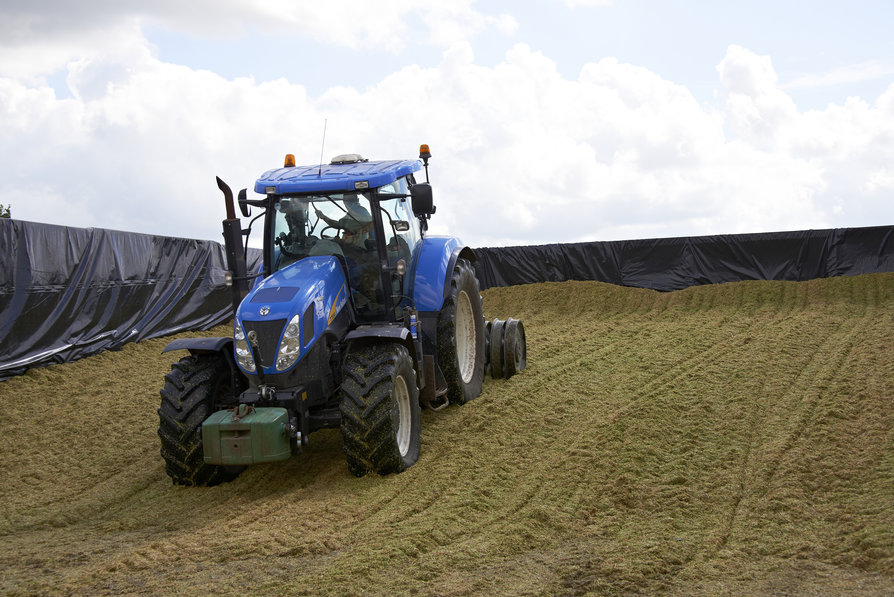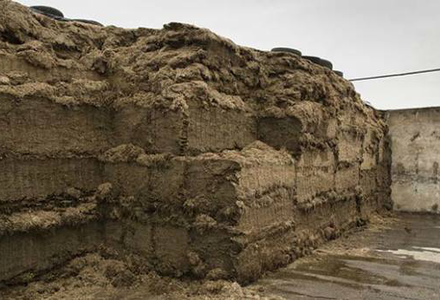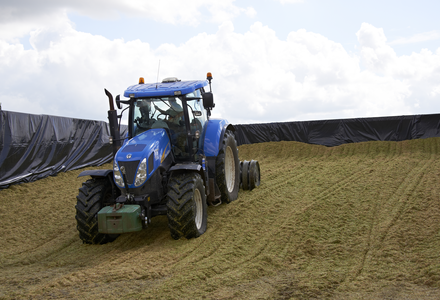How to deal with slippage in the clamp with multiple cuts in it.
Clamp management is really important. The clamp needs to be consolidated in thin layers of a maximum of 15cm. The layers should be flat, not sloping. Seal the clamp quickly after harvest and use side sheets. A minimum of two covers are needed and I would almost argue to use three. Definitely look to keep plenty of weight on top of the clamp.
 Clamp density is everything. Make sure you don’t have product coming in too fast and the guy with the buckrake knows how to make a clamp with thin layers of grass starting from the outside and evenly spread over the top of the surface so it can effectively consolidated. Once you think it is rolled enough, roll it for another hour.
Clamp density is everything. Make sure you don’t have product coming in too fast and the guy with the buckrake knows how to make a clamp with thin layers of grass starting from the outside and evenly spread over the top of the surface so it can effectively consolidated. Once you think it is rolled enough, roll it for another hour.
Slippage tends to occur with lower DM crops generally below 25% DM. However, the multi-cut system provides additional challenges because the low fibre content makes it more prone to slippage. Therefore, the key things are that the chop length should be longer - even at 30% DM, 5cm would be ideal; this will also help in improving rumen use of the silage.
In addition, the clamp should never be filled at an angle greater than 20deg to the horizontal. More than one cut in the same clamp, which means reopening and filling a subsequent cut also adds a risk, as if the subsequent cut has a lower DM it will have a heavier weight and could lead to slippage through additional weight on top. Care is required and I would prefer if possible to fill most of the subsequent cut in front of the previous cut, providing you can keep to the rule of 20deg maximum filling angle.
Stepping at feed-out is a possibility to reduce slippage, but it can increase other problems such as rainwater contamination and spoilage.


_listing.png?1521975793)